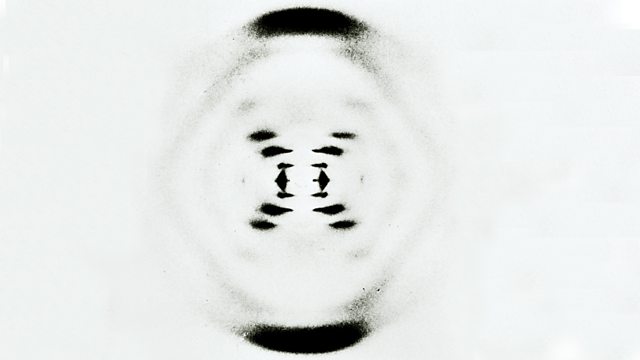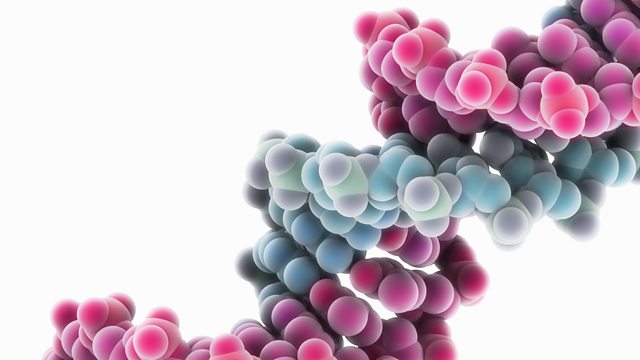DNA
 <
<



DNA molecules are large and complex. They carry the genetic code that determines the characteristics of a living organism.
Except for identical twins, each person’s DNA is unique. This is why people can be identified using DNA fingerprinting. DNA can be cut up and separated, forming a sort of 'bar code' that is different from one person to the next.
Genes
A gene is a section of DNA that codes for a specific protein. It is the unit of heredity, and may be copied and passed on to the next generation.
Chromosomes
The cell’s nucleus contains chromosomes. These are long threads of DNA, each made up of many genes.
The diagram shows the relationship between the cell, its nucleus, chromosomes in the nucleus, and genes.
The structure of DNA
James Watson and Francis Crick worked out the structure of DNA in 1953. By using data from other scientists they were able to build a model of DNA. The X-ray data they used showed that DNA consists of two strands coiled into a double helix.

X-ray diffraction photograph of DNA

Synthetic DNA molecule
Base pairs
Each strand of DNA is made of chemicals called bases. Note that these are different to bases in relation to acids and alkalis in chemistry. There are four different bases in DNA:
- thymine, T
- adenine, A
- guanine, G
- cytosine, C
There are chemical cross-links between the two strands in DNA, formed by pairs of bases. They always pair up in a particular way, called complementary base pairing:
- thymine pairs with adenine (T–A)
- guanine pairs with cytosine (G–C)
Base pairs on a section of DNA



No comments:
Post a Comment